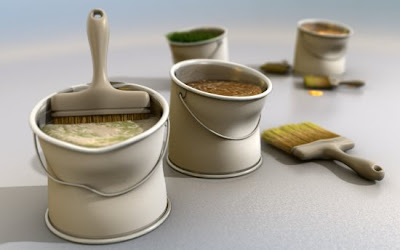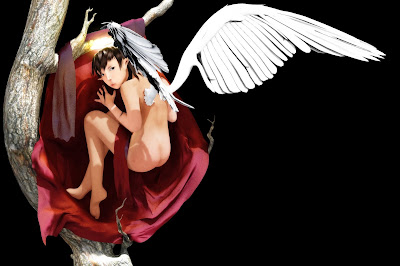PowerClipping is embedding shapes or other objects, such as bitmaps, within other shapes or objects.
Getting Started
The first thing you'll want to do is open a new graphic in Corel DRAW. Click File in the Menu bar, then New.

Importing a Photograph
Now let's add a bitmap image. You can choose any picture that you want on your computer.
You can add the bitmap image to the newly opened graphic by choosing File, then, Import. Doing so will open the Import dialog box.

After you have selected the image you want to import, the cursor will change and you can then click and drag the cursor to where the imported picture should be placed. Don't worry about getting it perfect because you can easily move and resize the imported image afterward.
Once you've defined where your bitmap image should go, release the mouse button and your image will appear.

Adding Text
Next we are going to insert the picture inside some text. You might think that placing the photograph inside some text would be more difficult than placing it inside a simple shape. But it really involves the same process and it's extremely easy to do.
With the imported picture added to the graphic, you can now add some text. This text will be used as the "container" for the picture. To add the text, select the Text Tool, and click somewhere away from the imported photograph. I'm going to type the word "ART".

Aligning Everything
This time we’ll align the imported picture and the “ART” text. To do so, simply choose the Pick Tool and move the text until it covers the imported photograph. You may need to resize the photograph and/or the text. You can do so using the Pick Tool. To do so, select the Pick Tool and click the object you want to edit and then click and drag one of the eight handles (the four corners and four midpoints) to get the text to mostly cover the imported image.

Adding the PowerClip With the text placed properly over the imported picture, select the picture using the Pick Tool. With the picture selected, choose Effects> PowerClip> Place Inside Container. You'll see a large black arrow icon. Use the large arrow to click on the text.

Clicking on the text will turn it into a container that will contain the imported picture.

Note: In order for the image to powerclipped to stay exactly the same place you must check if the Auto-center new Powerclip contents is unchecked. You can see this by clicking Tools> Options>Edit.

Adding an Outline Now we are going to add an Outline to the text. Right click one of the colors from the Color Palette on the right side of the screen to set the outline color. I'll use black for the example. With a color set, double-click the small pen icon in the lower right corner of the window. Doing so will bring up the Outline Pen dialog box.


Here is the final result:

for more cool tutorials, click here.
















































